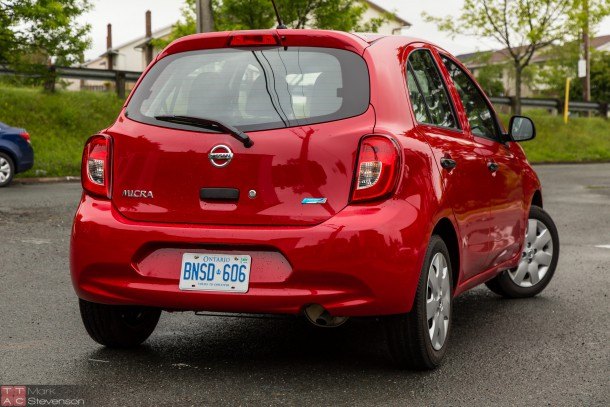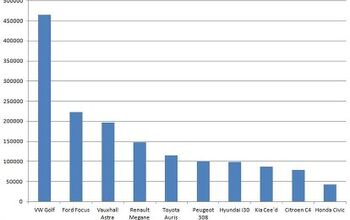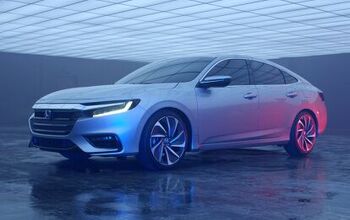This Is Why Nissan Isn't Bringing The Micra To America
Nissan began selling the Micra in the northern part of North America at the end of April 2014. The Micra was properly available by summer, and over the last twelve months — through the end of June 2015 — 11,832 Micras were sold in Canada.
Could the Micra make it in America? Can we do anything other than report evidence which supports Nissan USA’s decision to leave the Micra to their neighbors in the north and south?
There are a number of factors which cause the two auto markets north of the Rio Grande to appear similar at first glance. In the U.S. and Canada, the Ford F-Series is the perennial best seller. Windsor, Ontario-built minivans are the dominant players on both sides of the Detroit River. SUVs and crossovers are consistently generating more and more sales in both countries as the car sector loses market share in both countries.
Meanwhile, there are other factors which distinguish the two markets. In Nissan’s case, there may be no factor more obvious than the Micra and its position as an important member of Nissan’s car lineup. The Micra is Canada’s third-best-selling Nissan, ahead of everything except the top-selling Rogue and second-ranked Sentra.
Based on the last twelve months, the Micra’s impact on the overall Versa lineup is undeniable. Granted, over the first half of 2015, the duo is up 8 percent, year-over-year, but the 40 percent decline in sales of the Versa — the more expensive car — equals 3,222 fewer units for that nameplate.
The results visible in the above chart represent the carrying over of a few Canadian assumptions to the U.S. ledger. Presently, the Versa is America’s top-selling sub-compact by a wide margin. And even if Versa sales in the U.S. had fallen 40.4 percent in the first half of 2015, as they have in Canada, it still would be. But its share of the market, in a segment where sales of its rivals are slipping only slightly, would plummet.
And for what, 5,000 monthly Micra sales? (That figure approximates the Mitsubishi Mirage’s monthly average U.S. volume, multiplied by 2.25.) Yes, Nissan’s overall small car total would increase, but as in Canada, it wouldn’t increase by as large a margin as Nissan would like. Blame cannibalization.
Moreover, to create that increase for the sake of pleasing dealers who want another entry-level product with a bring-in-the-buyers, bargain-basement price tag; for the sake of stirring up free media over, perhaps, an $8,888 MSRP; and for the sake of engaging a group of youth buyers who may stay with the brand, Nissan would need to absorb the cost of marketing a new product, go through the rigmarole of certifying a new product and beat the Mirage at its own game. OK, maybe that last part wouldn’t be that hard.
So, why would Nissan USA avoid bringing the Micra to market? Because even with a slight increase in total volume, it simply may not be worth their while.
We’re using simple means of projection, yet it must be so. Only if Nissan USA released Micra pricing and information regarding any adjustments they’d be making to Versa bodystyles and/or trim lines would it be possible to know precisely what the Micra’s impact on the Versa would be. Yet, if the U.S. market resembles the Canadian market in any way, if the Micra fared surprisingly well in the U.S. as it has in Canada, and if doing so meant eating into a large chunk of Versa sales, we expect that first half volume in 2015 for the pair would only have risen by 10 percent.
Remember, a large part of the Versa’s appeal is its value quotient. If the Micra steals the affordability limelight, the Versa inevitably loses a chunk of buyers. These projections take into account a Versa decline identical to the one we’ve seen this year in Canada with a Micra, which roundly outperforms its Mitsubishi equivalent. There are inevitably other factors that would arise to throw off these projections, but if Nissan USA is looking at the northerly numbers, you can see why they wouldn’t want to bother with the Micra.
Unlike Canada, where the Koreans continue their domination of the subcompact market, Nissan already controls the U.S. subcompact category. Why mess with a good thing?
Timothy Cain is the founder of GoodCarBadCar.net, which obsesses over the free and frequent publication of U.S. and Canadian auto sales figures. Follow on Twitter @goodcarbadcar and on Facebook.
More by Timothy Cain
Latest Car Reviews
Read moreLatest Product Reviews
Read moreRecent Comments
- Analoggrotto Does anyone seriously listen to this?
- Thomas Same here....but keep in mind that EVs are already much more efficient than ICE vehicles. They need to catch up in all the other areas you mentioned.
- Analoggrotto It's great to see TTAC kicking up the best for their #1 corporate sponsor. Keep up the good work guys.
- John66ny Title about self driving cars, linked podcast about headlight restoration. Some relationship?
- Jeff JMII--If I did not get my Maverick my next choice was a Santa Cruz. They are different but then they are both compact pickups the only real compact pickups on the market. I am glad to hear that the Santa Cruz will have knobs and buttons on it for 2025 it would be good if they offered a hybrid as well. When I looked at both trucks it was less about brand loyalty and more about price, size, and features. I have owned 2 gm made trucks in the past and liked both but gm does not make a true compact truck and neither does Ram, Toyota, or Nissan. The Maverick was the only Ford product that I wanted. If I wanted a larger truck I would have kept either my 99 S-10 extended cab with a 2.2 I-4 5 speed or my 08 Isuzu I-370 4 x 4 with the 3.7 I-5, tow package, heated leather seats, and other niceties and it road like a luxury vehicle. I believe the demand is there for other manufacturers to make compact pickups. The proposed hybrid Toyota Stout would be a great truck. Subaru has experience making small trucks and they could make a very competitive compact truck and Subaru has a great all wheel drive system. Chevy has a great compact pickup offered in South America called the Montana which gm could make in North America and offered in the US and Canada. Ram has a great little compact truck offered in South America as well. Compact trucks are a great vehicle for those who want an open bed for hauling but what a smaller more affordable efficient practical vehicle.




































Comments
Join the conversation
Why Americans would prefer the Versa sedan over the more useful and versatile (sorry) Micra is hard to understand, the Versa does sell pretty well here, I suppose you get more room for your money compared to the likes of Spark and Yaris and even their own Note.
I know a lot of you out there would like to own and drive a sedan (I did,too but I rather go lift back)there was a time a sedan looked like a sedan,like the 78-86 Toyota Corolla, but somewhere,somehow engineers who went from formal roofline to a rounded look Or known as fastback creating a hideous look just for aerodynamics, so if the models in a car lineup include a lift back choice,I’ll take the lift back car over the hideous sedan anytime.